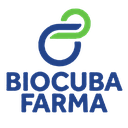Executive Secretary

VIII International Symposium on Chemistry and Pharmaceutical Sciences
SIIQ
XIII Conference "Chemical Engineering: Development, potentials and challenges"
Abstract
The treatment of wastewater with biological processes, such as anaerobic digestion, is a viable solution to the discharge of liquid waste with different levels of chemical and biological contamination, in addition to the generation of a highly valuable product from the energy point of view, biogas. This work presents the modeling and mathematical simulation of a technology for the treatment of wastewater from a plant producing fodder yeast for animal feed. The studies were carried out at laboratory and pilot plant scales. The mathematical analysis of the experimental data with Table Curve 2D software, allowed the selection of an equation of exponential nature that adjusts satisfactorily to the treatment of a mixed population of microorganisms, with a maximum cell growth at 0.625 d-1 and an estimated error of 24 mg/L and 71.91 mg/L for both scales, where two tubular reactors were installed in series. The simulation run with the mathematical package ISIM projected the sizing of the reactors for both stages. The calculated diameter was 0.0661 m and 0.63 m, while the heights were 2.56 m and 4.96 m in the laboratory and pilot plant experience, respectively. These results are of maximum interest for the design of a larger scale facility.
Resumen
El tratamiento de aguas residuales con procesos biológicos, tales como la digestión anaerobia, es una solución viable al vertimiento de los residuales líquidos con diferentes niveles de contaminación química y biológica, además de la generación de un producto altamente valioso desde el punto de vista energético, el biogás. En este trabajo se presenta la modelación y simulación matemática de una tecnología para el tratamiento de aguas residuales de una planta productora de levadura forrajera para alimento animal. Los estudios fueron realizados a escalas de laboratorio y de planta piloto. El análisis matemático de los datos experimentales con el software Table Curve 2D, permitió la selección de una ecuación de naturaleza exponencial que ajusta satisfactoriamente al tratamiento de una población mixta de microorganismos, con un crecimiento celular máximo en 0,625 d-1 y un error estimado de 24 mg/L y 71,91 mg/L para ambas escalas, donde se instalaron dos reactores tubulares en serie. La simulación ejecutada con el paquete matemático ISIM proyectó el dimensionamiento de los reactores para ambas etapas. El diámetro calculado fue de 0,0661 m y 0,63 m, mientras que las alturas fueron de 2,56 m y 4,96 m en la experiencia de laboratorio y planta piloto respectivamente. Estos resultados son de máximo interés para el diseño de una instalación a escala superior.
About The Speaker

Ing Gabriel Alejandro Iglesias Barreto

Discussion




